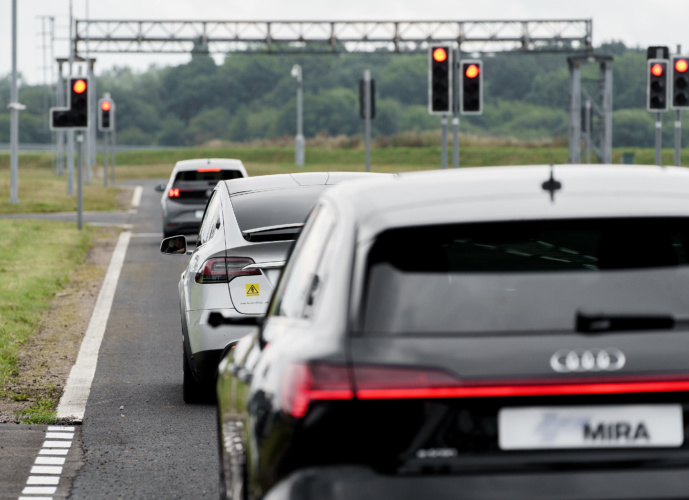To date, standards, regulation and Euro NCAP have been transformational for safety within the automotive industry, fast-tracking the introduction of safety features such as seat belts and ABS, saving countless lives.
As we edge closer to automation, due to the cutting-edge nature of the technology, there is a trend for automated driving system (ADS) developers to design solutions that surpass the requirements of today’s standards. OEMs need to set their own testing standards for these ADS technologies to ensure confidence in their safety and performance, whilst also positioning themselves for compliance with future standards and regulations, which are currently under development.

To bridge the gap until implementation, Euro NCAP has developed Highway Assist Systems protocols for assisted driving features, such as adaptive cruise control with steering support, which make initial advances towards assessing the performance of automated and assisted driving features. Although these assessments fall outside of the star rating, they are designed to give the consumer an understanding of, and confidence in, system performance, which ultimately contributes towards building consumer confidence in autonomous vehicles.
Due diligence
With ADS set to operate without human action, the responsibility of driving will shift from the occupant to the vehicle, and ultimately to the manufacturer. Accountability for the real-world safety of ADAS and ADS must be embraced by manufacturers, who need to interrogate safety use cases beyond current legislation and industry guidelines.
Manufacturers will be obliged to develop more rigorous design validation plans (DVP) in order to overcome this safety standards lag, which might include test scenarios conducted at higher speed ranges, providing assurance that sensors and systems work at a greater distance and greater speeds.
Data advances
Increasing the number of scenarios, both nominal and edge cases, will not just improve the safety case but will also result in valuable data and engineering understanding that will advance automated driving engineering faster than would otherwise be the case. Despite manufacturers having extensive testing experience of ADAS features, by making the test conditions for both ADAS and ADS more demanding, weak points in new technologies will be exposed to provide manufacturers with an accurate risk profile of their products prior to release. This will accelerate improvements and developments, as well as inform options for emerging tech, such as sensor choice or calibration methods.
Safe testing
While more rigorous testing is important to prove technologies that are progressively moving to the heart of the driving function, so too is the enhancement of testing environments to contend with the expanded scope of scenarios and to avoid the risks of serious accidents involving automated vehicles on the public highways.
Providing the public with safety assurances for automated driving technologies will be key for brand perception and user adoption
In the first instance, simulation’s rapid advancement as a tool for virtual validation has a key role to play, not just in mitigating against safety considerations but also in reducing risk early in the development cycle and supporting cost reductions.
Following simulation, proving ground testing provides a suitable context for the demands of automated driving and focuses rapid innovation. HORIBA MIRA’s recently opened ASSURED CAV facility has been purpose-built for the development and testing of connected and autonomous vehicles. Its Highway facility with a 300m diameter dynamic platform provides a testbed for scenarios such as co-operative merging and high-speed autonomous emergency braking. The site is covered by a private 4G and 5G mobile network with the latest ITSG5 standard that supports vehicle-to-everything communications, which will be mandatory for vehicles to achieve a Euro NCAP five-star rating from 2024.
Importance of public confidence
Providing the public with safety assurances for automated driving technologies will be key for brand perception and user adoption. A recent study conducted by Volkswagen Financial Services UK found that only one in five British motorists are likely to buy a driverless car when they become available.
At HORIBA MIRA, we are already seeing vehicle manufacturers take this matter seriously and consulting with us on DVPs and testing best practice. It is clear that manufacturers must take responsibility and set their own due diligence measures and standards to be confident in the safe performance of ADS technologies – and gain the confidence of their customers – long before they come to market and the switch of liability takes place.




Swiss geoengineering start-up targets methane removal
No mention whatsoever about the effect of increased methane levels/iron chloride in the ocean on the pH and chemical properties of the ocean - are we...